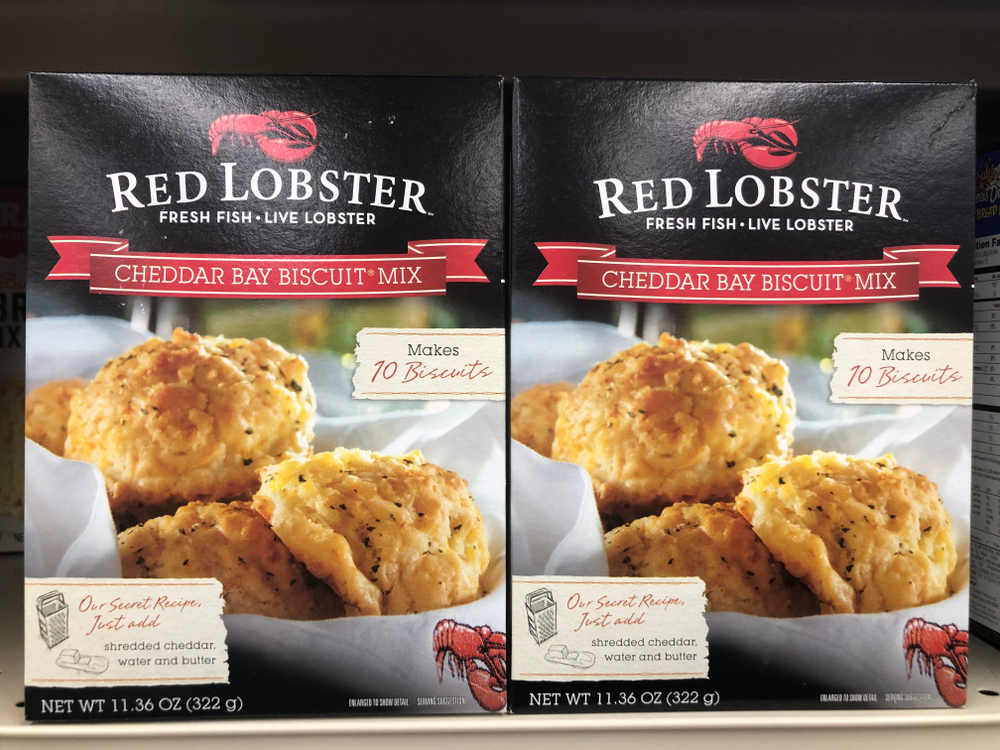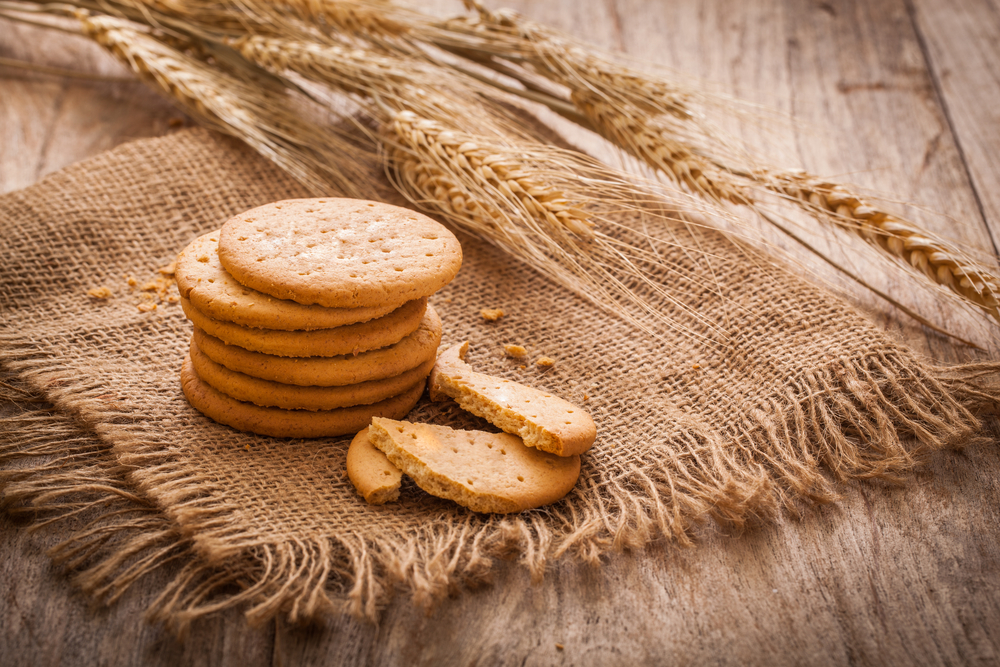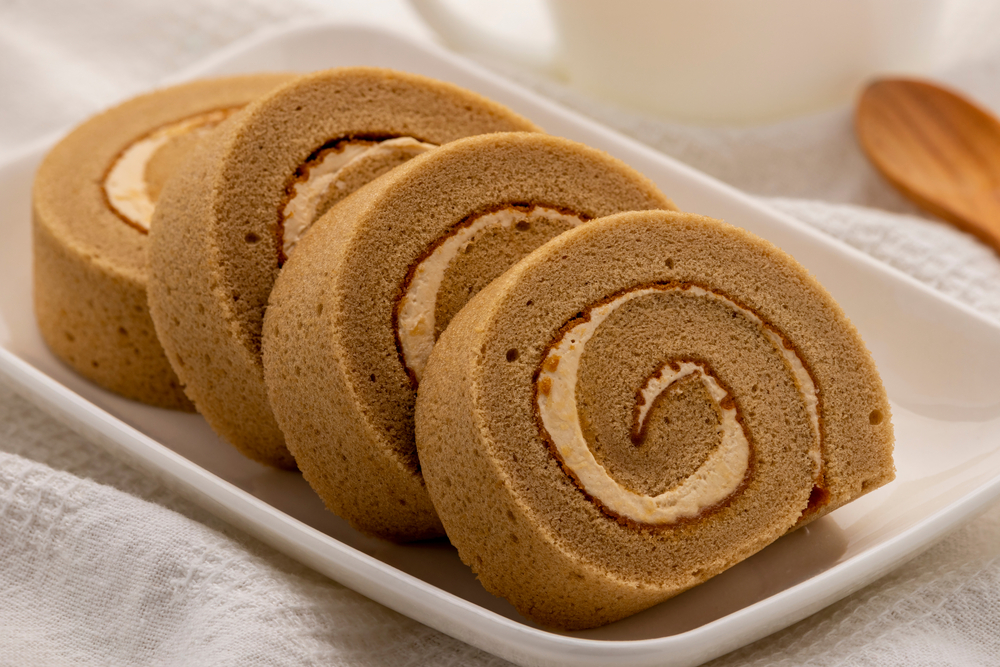Biscuits and rolls are both popular staples in many cultures’ cuisines, often used to accompany savory dishes or for breakfast with sweet spreads.
While they may appear similar at first glance, there are several key differences between these two types of baked goods that make each one unique and a favorite for various occasions.
In order to fully appreciate the nuances between biscuits and rolls, it is essential to understand their core ingredients, baking techniques, and the variations in recipes that contribute to their distinctive characteristics.
Furthermore, the divergent textures and tastes between biscuits and rolls as well as their potential uses in meals showcase their versatility, creating a fascinating world of baked goods ready for exploration.
Key Takeaways
- Biscuits and rolls have distinct ingredients and baking techniques, leading to unique textures and tastes.
- Both types of baked goods can be used in various meals, showcasing their versatility in culinary applications.
- Exploring the world of biscuits and rolls opens up a diverse range of baking options for both experienced and novice bakers.
Understanding Biscuits and Rolls
Biscuits and rolls are both popular baked goods that can be found in a wide range of culinary traditions around the world. They are enjoyed by many for their satisfying taste and texture.
Biscuits are typically small, round, and flat baked goods made from flour, sugar, and fat. They are known for their crunchy texture and can easily be picked up and consumed by hand, making them a perfect snack.
The term “biscuit” can also refer to a soft, tender bread-like product in some regions, particularly in the United States.
Rolls, on the other hand, are typically a type of bread made from a soft dough. They can be leavened or unleavened and come in a variety of shapes and sizes, often being served in multiples.
The texture of rolls is softer and more chewy than that of biscuits, making them ideal for use as sandwich bases or simply consumed with butter or other spreads.
Biscuits and rolls each offer unique qualities that make them stand out among baked goods. Biscuits tend to have a longer shelf life, thanks to their crunchy and harder texture, which results from lower moisture content.
This also allows them to be stored without refrigeration for an extended period. Rolls are generally softer and more versatile, making them suitable for both sweet and savory applications.
Some key differences between biscuits and rolls that might be useful to consider when making a choice between these two baked goods are:
- Texture: Biscuits are typically hard and crunchy, while rolls are soft and chewy.
- Ingredients: Biscuits often have a higher fat content, while rolls are predominantly flour-based, making them less dense.
- Shelf Life: Biscuits have a longer shelf life compared to rolls due to their lower moisture content.
- Serving Options: Biscuits are generally eaten as a snack, while rolls can be used in a wide range of dishes, such as sandwiches or as a part of a meal.
- Cultural Origins: Biscuits and rolls can be found in culinary traditions across the globe, but each has unique regional variations.
In summary, both biscuits and rolls have distinct characteristics that set them apart from one another. Whether eaten as a quick snack or included as part of a meal, their differing textures, ingredients, and serving options allow them to be enjoyed in a range of different contexts.
Basic Ingredients
Biscuit Ingredients
Biscuits are made with simple and few ingredients. The primary components include flour, baking powder, and butter or shortening.
Some recipes call for the addition of sugar and salt to enhance the flavor. The liquid component is typically milk or buttermilk, resulting in a rich and tender texture.
Biscuit dough is made by cutting cold butter or shortening into the dry ingredients until it reaches a crumbly consistency.
Then, the liquid is added, and the dough is gently mixed just until everything comes together. Overmixing will result in tough biscuits, so it’s essential to work the dough minimally.
Roll Ingredients
Rolls, on the other hand, have a slightly different set of ingredients. The primary components remain the same: flour, water, and salt.
However, rolls utilize yeast as the leavening agent instead of baking powder. Additional ingredients, such as sugar, butter, and eggs, are common in some roll recipes, depending on the desired final product.
In contrast to biscuit dough, yeast roll dough is usually mixed until smooth and then kneaded to develop the gluten, providing a more elastic and structured final product.
The dough is mixed, kneaded, and then left to rise until doubled in size before shaping into rolls and undergoing a second rise.
To summarize, the basic ingredients in biscuits and rolls are similar, with primary differences arising from the leavening agents (baking powder for biscuits and yeast for rolls) and the techniques used in their preparation.
Baking Techniques
Baking Biscuits
Biscuit baking requires a careful selection of ingredients and a specific technique to achieve a flaky, tender texture. The recipe usually calls for a mixture of flour, butter, baking powder, and milk.
In the mixing process, it is crucial to keep the butter cold and cut into small pieces. This prevents the dough from becoming too elastic and promotes flakiness in the biscuits.
Without much kneading, the dough should be rolled out to a thickness of about 1/2 to 3/4 inch on a lightly floured surface. Biscuits are often shaped into rounds with a cutter or a glass.
Place the biscuits on a baking sheet with some space between them to allow for expansion during baking. Bake the biscuits in a preheated oven at a temperature of around 425°F (220°C) for 10 to 12 minutes. The end result should be lightly golden brown biscuits with a soft, moist interior.
Baking Rolls
Rolls, on the other hand, involve a different set of techniques and ingredients. The recipe for rolls generally involves a combination of flour, yeast, milk, sugar, salt, and butter.
The process begins with proofing the yeast, which involves mixing it with warm water and sugar to activate it. Once the yeast mixture is frothy, it is combined with the other ingredients.
Kneading the dough is an essential step when making rolls. Unlike biscuits, rolls require more gluten development to achieve the desired elasticity. Kneading can be done by hand or using a mixer with a dough hook attachment.
After kneading, the dough needs time to rise. This is called proofing, and it usually takes about an hour or until the dough has doubled in size.
Once the dough has risen, portion it into equal-sized pieces and shape them into rolls. Placing the rolls on a baking sheet with enough space between them ensures proper baking.
Rolls should be baked in a preheated oven at a temperature of 350°F (180°C) for around 20 to 25 minutes. Depending on the recipe, rolls can vary from soft and airy to dense and crusty.
Variations in Recipes
Southern Biscuits
Southern biscuits are a classic staple of the American South. Traditionally made with just a few simple ingredients such as flour, lard or shortening, buttermilk, and baking powder, these biscuits are known for their buttery and flaky texture.
The dough is usually rolled out and cut into circles, creating uniform biscuit shapes. A variation of Southern biscuits, known as drop biscuits, has a wetter dough that is “dropped” onto the baking sheet rather than rolled and cut.
NY Style Rolls
In contrast to Southern biscuits, NY style rolls, often associated with New York City bakeries, lean towards a more European influence in their recipes. A key difference between Southern biscuits and NY style rolls is the addition of yeast, which allows for a lighter, more airy texture.
This type of roll can be found in various shapes, such as knots or crescents, and can be served plain, topped with seeds, or filled with ingredients like nuts. Another variation includes muffins that are baked in small, mold-like containers, resulting in a dome-shaped top.
Some NY style rolls may also feature a sweet glaze or a topping of nuts for added texture and flavor, distinguishing them from the more savory Southern biscuits.
Both Southern biscuits and NY style rolls have their own unique characteristics, providing a diverse array of choice for those seeking to enjoy these types of baked goods.
Differences in Texture and Taste
Biscuits and rolls are popular baked goods that share similarities but also have notable differences in texture and taste. Biscuits are typically airy and flaky, while rolls are soft and more dough-like.
The biscuit’s texture is a result of the way butter or other fats are used in the dough. As the butter melts during baking, it creates pockets of air which contribute to the flaky layers.
Biscuits often have a crumbly exterior, giving them a satisfying crunch when bitten into. In terms of taste, biscuits are generally buttery with a touch of sweetness.
In contrast, rolls are usually made with a yeasted dough that is allowed to rise before baking. This results in a soft, tender texture that is not as crumbly as biscuits.
The dough for rolls is often enriched with ingredients like eggs, milk, or additional fat, contributing to their soft and sometimes slightly chewy texture. When served warm, rolls have a pleasant aroma that enhances their overall taste.
Both biscuits and rolls can be enjoyed on their own, with butter, or as an accompaniment to a meal. The choice ultimately depends on personal taste preferences and the desired texture.
For those who prefer a light, airy, and flaky treat, biscuits may be the preferred choice. However, for those who enjoy a soft, doughy, and warm baked good, rolls are an excellent option.
Using Biscuits and Rolls in Meals
Breakfast Options
Biscuits and rolls can be a delicious and versatile addition to your breakfast menu. For a quick and satisfying option, croissants can be enjoyed with a variety of fillings such as ham, cheese, or fruit preserves. Pairing them with a hot cup of coffee or tea makes for an ideal breakfast.
Doughnuts are also a popular breakfast item, often enjoyed as a sweet treat to start the morning. Many bakeries and restaurants offer a variety of doughnuts, including glazed, filled, or topped with icing and sprinkles.
It’s worth noting that doughnuts are best enjoyed in moderation, as they can be high in sugar and fat.
Dinner Ideas
When it comes to dinner, incorporating biscuits or rolls into the meal adds an element of comfort food to the dining experience. Rolls are an excellent side dish for many dinner menus and can be served warm with butter or customized with delicious spreads such as garlic herb butter.
For a creative twist on a traditional dinner dish, consider making pies using biscuit dough as the crust. This can be done with both sweet and savory fillings, such as chicken pot pie or apple pie. The flaky biscuit crust complements the filling, making for a hearty and delicious combination.
Lastly, don’t overlook the variety of options available at restaurants when it comes to biscuits and rolls. Many establishments specialize in dishes that feature these tasty baked goods, giving diners the chance to try new and innovative combinations.
So, be sure to explore different venues to further enjoy the versatility of biscuits and rolls in your meals.
Health and Diet Considerations
When it comes to health and diet, both biscuits and rolls have their own set of considerations. Biscuits are typically high in fat and calories, due to the butter or lard used in their preparation.
Rolls, on the other hand, are often lower in fat and calories because they are made with yeast and often contain less added fat.
In terms of nutritional content, rolls tend to offer more nutritional value compared to biscuits. Rolls are usually made with whole grains, providing fiber and essential nutrients such as vitamins and minerals, while biscuits are often made with refined flour, which lacks these beneficial compounds.
For those following a gluten-free diet, biscuits and rolls can pose a challenge, as both typically contain wheat flour. However, there are gluten-free alternatives available for both of these baked goods.
Gluten-free flour blends can be used to create biscuits and rolls without the gluten protein, making them suitable for individuals with gluten intolerance or celiac disease.
Be sure to check ingredient labels for any hidden sources of gluten to ensure the baked goods are truly gluten-free.
Additionally, for individuals seeking to reduce their sugar intake, it’s crucial to consider that some types of biscuits may contain added sugars, while most rolls do not.
Opting for whole grain rolls and sugar-free biscuit recipes can help consumers manage their sugar consumption.
In summary, rolls generally offer more nutritional value and fewer calories compared to biscuits, but various factors such as gluten-free alternatives and sugar content must be considered when making dietary choices.
When consumed in moderation and with attention to healthful ingredients, both biscuits and rolls can be enjoyed as part of a nutritious diet.
Fun Baking Activities for Children
One of the joys of childhood is getting to play in the kitchen and create delightful treats. Baking with children can be both educational and entertaining. It’s an excellent opportunity to introduce them to the concepts of measuring, mixing, and following a recipe.
Not only will children have the chance to learn new skills, but they will also experience the joy of making something delicious with their own hands.
Baking biscuits and rolls are perfect activities for children, as they involve simple recipes and techniques. For example, biscuits require just a few ingredients – flour, butter, and milk – and a simple process to follow.
The children will be thrilled to make the dough, cut it into shapes, and see the transformation in the oven. Rolls, on the other hand, involve yeast and a bit of waiting time, teaching children about patience and the magic of bread-making.
While making biscuits, let the children be in charge of cutting the dough into fun shapes, using cookie cutters or knives. They can experiment with different sizes, shapes, and even toppings.
Some ideas for toppings can include icing, sprinkles, and colorful sugars. The final product will not only be tasty but also a beautiful work of art that the children can be proud of.
When making rolls, children can have a blast kneading the dough and experiencing its transformation as it grows and becomes airy.
Allowing them to shape the rolls into various forms, such as braids, knots, or even animals, can further enhance their creativity. Remember to let them have fun with the process, even if it gets a little messy.
To make the experience more enjoyable and interactive, consider some of the following ideas:
- Set up a small baking station for the children, complete with their utensils and ingredients.
- Allow the children to measure, pour, and mix the ingredients themselves, under supervision.
- Explain the importance of each ingredient and step in the recipe.
- Applaud their efforts and encourage them every step of the way.
By engaging in these baking activities, children will not only develop a sense of achievement and satisfaction but also create lovely memories that they will cherish for a lifetime.
Baking together as a family can foster strong bonds and result in happy, confident children who are always eager to learn and grow.
Exploring More Baked Goods
Biscuits and rolls are just a small slice of the vast world of baked goods. From simple bread to decadent desserts, there are countless treats to explore and enjoy. In this section, we’ll discuss two more popular categories: cakes and a variety of biscuit recipes.
Cakes are a timeless classic, perfect for celebrations and everyday indulgences alike. They come in a plethora of flavors, textures, and styles, making them a versatile choice for satisfying any sweet tooth. Some popular types of cakes include:
- Sponge cakes: Light and airy, often used as the base for layered cakes and filled with various frostings or creams.
- Butter cakes: Rich and moist, typically made with butter or oil and topped with flavorful icings.
- Pound cakes: Dense and firm, usually flavored with vanilla or lemon and served with a dusting of powdered sugar or a simple glaze.
- Cheesecakes: Made with a creamy mixture of cream cheese, eggs, and sugar, and often paired with fruit or chocolate toppings.
Biscuit recipes, on the other hand, offer a more subtle, satisfying taste profile suitable for a snack or accompaniment to a meal.
Numerous variations exist, with different ingredients, preparation methods, and shaping techniques resulting in a wide array of biscuits. Some examples of popular biscuit recipes include:
- Shortbread: Traditional Scottish biscuits made with just three ingredients – butter, sugar, and flour – that are perfect for afternoon tea or as a base for tarts and desserts.
- Gingerbread: Spiced with ginger and molasses, these biscuits can be cut into intricate shapes and decorated with icing for a festive treat.
- Sugar cookies: Soft and sweet, these versatile biscuits can be rolled out and cut into various shapes, perfect for decorating with colored icings and sprinkles.
- Anzac biscuits: An Australian favorite, made with oats, golden syrup, and coconut, giving them a unique chewy texture and sweet flavor.
With such a diverse range of baked goods available, there’s always something new and exciting to try. Whether you prefer a delicate cake, a hearty roll, or a crispy, flavorful biscuit, you’re sure to find a variety of recipes that cater to your preferences and cravings.
The world of baked goods offers endless opportunities for creativity, experimentation, and, most importantly, enjoyment.
Frequently Asked Questions
What sets apart the taste of biscuits and rolls?
The taste of biscuits and rolls can be quite distinct due to the ingredients used in making them. Biscuits are usually made using flour, butter, sugar, and sometimes include flavorings such as vanilla or cinnamon.
They tend to have a slightly sweet and buttery taste. On the other hand, rolls are made using flour, water, yeast, salt, and occasionally some butter or oil for a tender texture.
They have a mild, yeasty flavor, and the taste can vary depending on whether the rolls are enriched with additional ingredients such as seeds, nuts, or herbs.
How do the calorie contents differ between biscuits and rolls?
The calorie content of biscuits and rolls can differ significantly due to the varying amounts of fat, carbohydrates, and sugar in each. Biscuits tend to have a higher calorie count due to the added sugar and butter content.
A typical biscuit may contain around 150 to 200 calories, depending on its size and specific recipe. In contrast, rolls usually contain fewer calories, mainly because they lack added sugars and have less fat. A standard dinner roll may have approximately 80 to 130 calories.
Which has more nutritional value, a biscuit or a roll?
It’s difficult to determine which has more nutritional value between a biscuit or a roll since it largely depends on the specific ingredients used.
However, in general, rolls are often seen as having a slight edge in nutritional value, as they are lower in fat, calories, and sugar compared to biscuits. Additionally, rolls made from whole grain flour can be high in fiber, vitamins, and minerals.
However, biscuits can also provide some nutritional value, especially when made with whole grain flour or containing nuts or seeds.
How do biscuit rolls and roll-up recipes differ?
Biscuit rolls refer to a type of pastry in which biscuit dough is rolled, often with a sweet or savory filling, and are then cut into slices and baked. Biscuit rolls typically have a tender, flaky texture, similar to biscuits.
On the other hand, roll-up recipes involve rolling a thin sheet of dough, such as yeast dough or pastry dough, around sweet or savory fillings, creating a rolled and filled log shape.
Roll-up recipes encompass various baked goods from various culinary traditions, including cinnamon rolls and Stromboli.
What distinguishes a biscuit and roll in terms of texture?
Biscuits and rolls have different textures due to the ingredients and baking methods used. Biscuits are made with cold, solid fat cut into the flour, which creates pockets of fat that yield a tender, flaky-textured pastry.
Rolls, on the other hand, use softened or liquid fat and yeast, making their texture soft, slightly chewy, and more bread-like.
How do bread and pastries relate to biscuits and rolls?
Bread and pastries are categories of baked goods within which biscuits and rolls fall. Biscuits are generally classified as a type of pastry because they consist of a flour-based dough enriched with solid fat, giving them their characteristic flaky texture.
Rolls, meanwhile, are considered to be a type of bread, as they are made from a yeast-leavened dough that is not enriched with solid fat, resulting in a different texture compared to biscuits.
Both biscuits and rolls have various forms and recipes across cultures and cuisines, making them versatile and well-loved staples in many kitchens.







